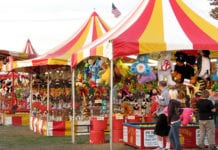At the KidMin Conference in Chicago this past weekend I did a pre-conference session on evaluating your children’s ministry. We talked about the complexity of children’s ministry and the need to constantly be looking through an “evaluation lens”. We also talked about facilities and the area of safety in our ministry. It is absolutely vital to pay attention and keep up.
Today I received my regular enewsletter from a company called SafeChurch. I don’t usually post about cribs in the nursery, but this article struck me on two levels:
- First, for what it is – a call for checking on the cribs (and other areas) in your nursery;
- Second, as a reminder of the overall importance of paying attention to these kinds of issues in our ministries. Don’t leave it to chance – what is your “system for safety”? I hope you have one!
~~~~~~~~~~~~~~~~~
From SafeChurch enewsletter called Safety Watch (10/12/2011):
The numerous dangers of drop-side cribs have been in the news over the past several years. For example, since 2007, there have been more than 11 million cribs recalled by the U.S. Consumer Product Safety Commission (CPSC). Since 2000, there have been 32 deaths linked to detaching, drop-side rails.
These statistics are staggering, and because of the high number of fatalities and injuries, the CPSC voted unanimously to approve new mandatory standards for full-size and non-full size baby cribs, as ordered by the Consumer Product Safety Improvement Act of 2008 (CPSIA). The new guidelines took effect in June, and include all cribs manufactured and sold, including resale, or leased in theUnited States. These regulations had not been updated in almost 30 years and have the following purposes:
- Stopping the manufacture and sale of dangerous, traditional drop-side cribs;
- Making mattress supports stronger;
- Making crib hardware more durable; and
- Making safety testing more rigorous.
Drop-side cribs are not the only safety hazard. Screws and other hardware can loosen over years of use, especially when older children begin to shake the frames or jump in the cribs. These new regulations help ensure that the hardware will stay tightly fastened, even over many years of use. In addition, mattress supports, slats and hardware must now be more durable, requiring more stringent testing to ensure that the beds are in compliance with the updated guidelines. With these rules in place, consumers should expect to see a new line of safer cribs in the marketplace.
Make a Plan These changes come in two stages. Effective June 28, cribs that do not meet the new safety standards can no longer be sold. Beginning Dec. 28, 2012, organizations must replace their existing cribs with ones that meet the safety standards. Child care centers, daycares, and church nurseries that charge a fee must comply with that deadline. The CPSC has not yet provided guidance on whether a church nursery that does not charge a fee but pays its workers also must comply, but given the dangers involved, the recommended risk management practice is that churches discontinue their use of non-compliant cribs. The deadline allows organizations with numerous cribs time to replace non-compliant cribs, but the sooner these can be replaced the better. Until all of the cribs in your facility have been replaced, you should frequently check older cribs for loose hardware and loose, broken or missing parts.
Planning how your church will make the transition to comply with these new regulations, both financially and functionally, can help make the conversion less strenuous, as well as help reduce the financial burden on your church. As a reminder, you will not want to sell or donate your non-compliant beds, as they are not safe for anyone to use. The CPSC recommends that these cribs be disassembled before being discarded, so that no one is tempted to use them.
Keep the Children Safe Keeping the children who have been entrusted to your care safe is the number one priority, and the reason that these guidelines have been updated. While the conversion to the safer cribs may be a large financial investment for your church, doing so will not only help protect those who are too young to protect themselves, it also will help protect the church against an expensive claim or lawsuit. For additional information, please visit the U.S. Consumer Product Safety Commission, CribInformationCenterwebsite at: http://www.cpsc.gov/info/cribs/index.html.
~~~~~~~~~~~~~~~~~








